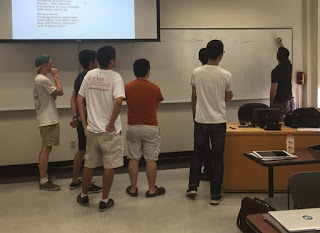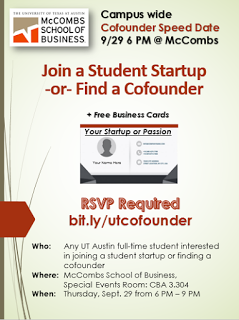Fistfights with Co-Founders can be avoided! Here are some tips for founding your company with partners, such that later on, when things get complicated (like founders quitting, etc.), ya’ll don’t kill each other. Nothing feels more frustrating than a founder that quits, and takes a bunch of stock with him…. A big benefit of this method is also: many VCs will prefer this type of structure (vesting)! And.. the IRS might prefer it too… so, here goes!
- First, decide who is bringing “value” to the company at this point… (like who is bringing ‘the idea’, or ‘some tech’, or contributing ‘some gear’, or contributing ‘some money’). If nobody is bringing anything, skip to step 3.
- Set aside 10-30% of stock to give to people who ‘brought something’ to the team… Rule of thumb: 5% for money or stuff, 10% for tech, 20% for idea.
- Now take the remainder (90-70%) and set that aside to distribute evenly to the whole team for “work on the business plan prior to formation”.
- Okay, now assign the remainder amount evenly with all founders (example 7 founders, 70% means 10% per founder).
- Next assign the ‘brought something’ extra stock to the given founders (example idea will have 30%, tech guy has 20%, and the rest have 10%).
- Agree on a vesting term (3 year, monthly vesting is common).
- Now, write a VERY short Memorandum of understanding with everyone’s name, the date, signature places, and most importantly the vesting terms.
- Pick a CEO! (the 1 person who shall be the CEO and in the drivers seat! All other roles could be identified too, but the CEO role is a must.). It does not have to be the idea guys, but it’s nice if it is.
Here’s an example Memorandum (note: I’m not a lawyer, and this wasn’t written by one: use at your own discretion). (names are made up, except mine)
Memorandum of Understanding
We, who plan to found company ______ each agree that when this founding occurs we will split the shares of the company as follows:
Joe Smith: 30%, Whom we agree shall be the CEO of the company.
Frank Toe: 20%
Alan Man: 10%
Harlan Beverly: 10%
Sally Jenson: 10%
Erin Klause: 10%
Jessica Stower: 10%
We agree that these shares should have a vesting period of 3 years, whereby vesting happens evenly, monthly, over a period of 3 years. the company shall have the right to any stock not vested in the event that any founder leaves the company (voluntarily or involuntarily). We, agree that this vesting shall begin on this day ________.
Signed,
______________________________, Date ______________
______________________________, Date ______________
______________________________, Date ______________
______________________________, Date ______________
______________________________, Date ______________
______________________________, Date ______________
______________________________, Date ______________
That’s about it!
Now, get it done right, so that you don’t have to fight!
Later on, when you actually found the company (as in incorporate), this document will go away… and be replaced with real shareholders agreements and so forth.





